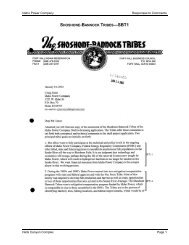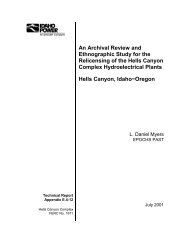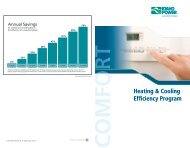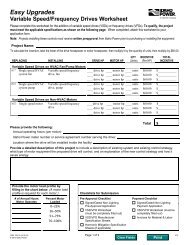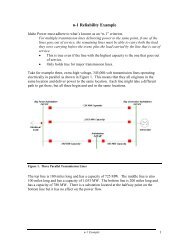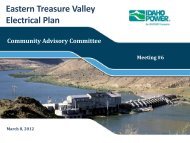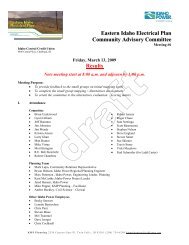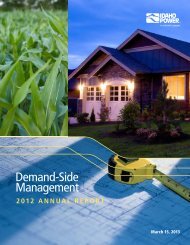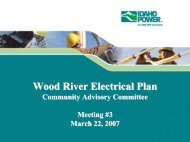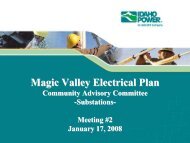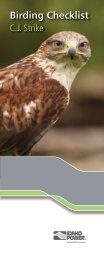Assessment of Chukar and Gray Partridge Populations - Idaho Power
Assessment of Chukar and Gray Partridge Populations - Idaho Power
Assessment of Chukar and Gray Partridge Populations - Idaho Power
- No tags were found...
Create successful ePaper yourself
Turn your PDF publications into a flip-book with our unique Google optimized e-Paper software.
Hells Canyon <strong>Chukar</strong> <strong>and</strong> <strong>Gray</strong> <strong>Partridge</strong> Report, Ratti <strong>and</strong> Giudice 41Table 1. Sampling design for on-site surveys for qualitative evaluations <strong>of</strong> chukar <strong>and</strong> graypartridge populations <strong>and</strong> habitats along the Snake River, Hells Canyon, from Weiser, <strong>Idaho</strong>(river mile 351) to Hells Canyon Dam (river mile 247).1999SurveyNumber2000SurveyNumberRiver MileSegment River SideRiver MileSegment River Side1 250* ID 1 254* ID2 258 OR 2 262 OR3 266 ID 3 270 ID4 274 OR 4 278 OR5 282 ID 5 286 ID6 290 OR 6 294 OR7 298 ID 7 302 ID8 306 OR 8 310 OR9 314 ID 9 318 ID10 322 OR 10 326 OR11 330 ID 11 334 ID12 338 OR 12 342 OR* Note: The order <strong>of</strong> actual river segments surveyed was selected r<strong>and</strong>omly during each year,i.e., sequential presentation in the table was provided to show the systematic distribution <strong>of</strong> surveysthroughout the study duration.<strong>and</strong> brood-rearing cover, <strong>and</strong> food. For each habitat classification, we recorded an ocularestimation <strong>of</strong> the percent <strong>of</strong> area, which totaled 100% (e.g., 40% fair, 50% good, 10% excellent).We classified (<strong>and</strong> scored) grazing as low (1), moderate (2), heavy (3), or severe (4). For eachsurvey segment, we took a minimum <strong>of</strong> 2 color photographs <strong>of</strong> “typical habitat” for the generalsurvey area. For each photo site we recorded date <strong>and</strong> river mile, <strong>and</strong> side <strong>of</strong> the river (i.e., <strong>Idaho</strong>or Oregon). General physiographic features <strong>and</strong> l<strong>and</strong>-use patterns were described for eachsurvey segment.As noted for the population data, these data were general classifications <strong>and</strong> wereintended for statistical comparison among survey sites or between sampling years. Theinformation was intended as baseline information for a well-organized qualitative assessment <strong>of</strong>the environment <strong>and</strong> partridge habitat.5.1.3. Spring Site VisitsDuring spring 2001, we conducted site visits to most fall-survey sites. Spring-site visitsconsisted <strong>of</strong> relatively brief visits to visually assess habitat conditions, <strong>and</strong> obtain comparativecolor photographs for the region. Our goal was to visit all fall-survey sites, however, water levels<strong>and</strong> other unforeseen factors prevented access to some sites. Because fall-winter surveys wereconducted over a 2-year period, <strong>and</strong> spring surveys were conducted only in 2000, there was asplit in the temporal sequence <strong>of</strong> visits to specific sites. That is, for sites surveyed in fall-winter1999, we obtained fall 1999 <strong>and</strong> spring 2000 photos <strong>and</strong> other qualitative-assessment data. Forthe sites surveyed in fall-winter 2000, we obtained spring 2000 <strong>and</strong> fall-winter 2000 data.



